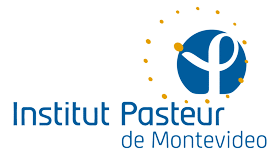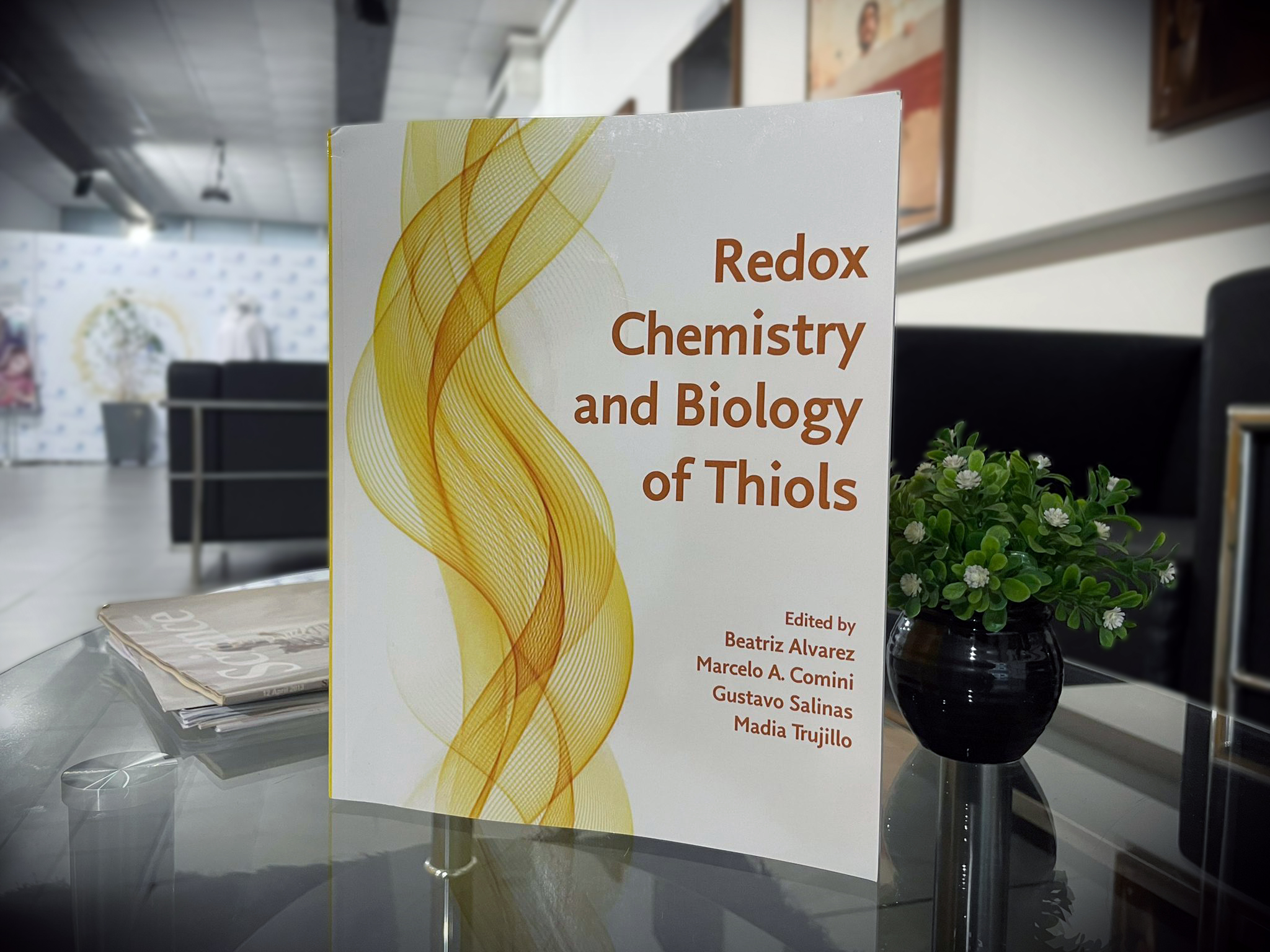More than 20 years of accumulated knowledge were recently transformed into a book created by Uruguayan scientists and published by the prestigious publisher Academic Press, Elsevier, which provides students and researchers with up-to-date information on the chemistry and redox biology of thiols, an area that has seen significant advances in recent years.
Beatriz Álvarez, Marcelo Comini, Gustavo Salinas and Madia Trujillo, researchers at the Institut Pasteur de Montevideo and the University of the Republic, are the authors of “Redox Chemistry and Biology of Thiols”, a book in English that fills a bibliographical gap on the subject, as there was no comprehensive academic text or reference book on it.
Thiolsare molecules similar to alcohols but with a richer biochemistry because they contain sulphur. They are present in all living things, from bacteria to humans. Their chemical versatility allows them to perform diverse functions, from stabilising protein structure, removing oxidants and accelerating reactions, to acting as mediators in cell signalling. For all these reasons, the functions of thiols are relevant to health and are potential targets for therapeutic intervention. This field of science has gained renewed interest and is developing rapidly, both conceptually and methodologically.
For the researchers responsible for the book, this work comes naturally, as since 2009 they have been promoting an international course and symposium on the subject in the country, which has periodically been devoted to the essential concepts of thiol-dependent redox processes, starting from the chemical and biological bases. With national and international lecturers, this “school”, aimed mainly at postgraduate students, has offered lectures, practical activities, bioinformatics exercises and analysis of scientific articles, with the aim of providing comprehensive and up-to-date training. The course filled an important place at the international level, which is why the most prominent academics in the field visited our country on several occasions. The book is therefore a natural corollary of this accumulated experience.
“When Elseviercontacted us following the recommendation of PhD Ruma Banerjee, we had no hesitation in proposing a book that would provide detailed, comprehensive and up-to-date information on the chemistry and biology of thiol-dependent processes,” the authors say in the preface to explain the genesis of the work.
Thus, the material is presented as a reference book on thiols, ranging from the most basic aspects of redox chemistry and thiol biology to translational aspects and clinical practice.
Its 723 pages are divided into 28 chapters written by more than 70 national and international scientists who are leaders in their fields. For example, and with an emphasis on chapters involving national authors, the first chapter on the basic concepts of thiol chemistry and biology was written by Álvarez and Salinas. Rafael Radi and Ari Zeida wrote about thiol oxidants of biomedical relevance. Trujillo and Brazilian collaborators wrote about thiol- and selenol-dependent peroxidases. Sebastián Carballaltogether with Banerjee wrote on cysteine metabolism, and Gerardo Ferrer-Sueta on the reactivity of thiols. Comini was in charge of a chapter on thiols in trypanosomatídeos. Matías Moller and Ana Denicola wrote about S-nitrosothiols, and Ernesto Cuevasanta and collaborators about hydrogen sulphide. Reflecting the broad and varied focus of the book, another chapter on thiols in the blood was written by Lucía Turell, Leonor Thomson and collaborators.
In terms of foreign authors, the book includes chapters written by the organisers of five of the Gordon Research Conferences on the subject, the highest international academic level.
“We hope that this book will be useful for researchers, students, clinicians and industry workers with different backgrounds, including newcomers looking to learn about basic aspects of thiols, as well as those seeking to deepen their knowledge on specific topics. We hope that our fascination with thiols will be passed on to readers,” the authors conclude.
“Redox Chemistry and Biology of Thiols”, Elsevier/Academic Press, 723 pages (for sale online).


